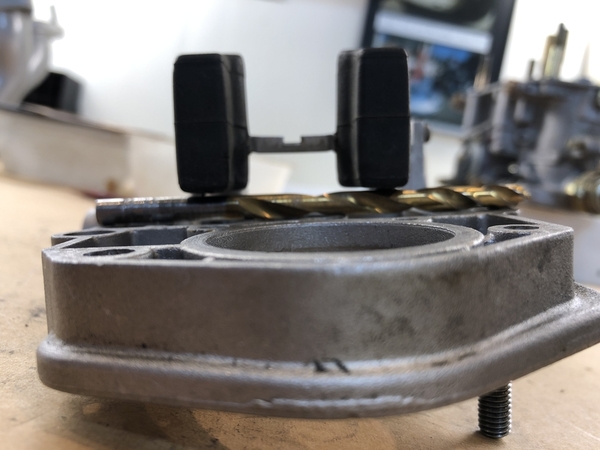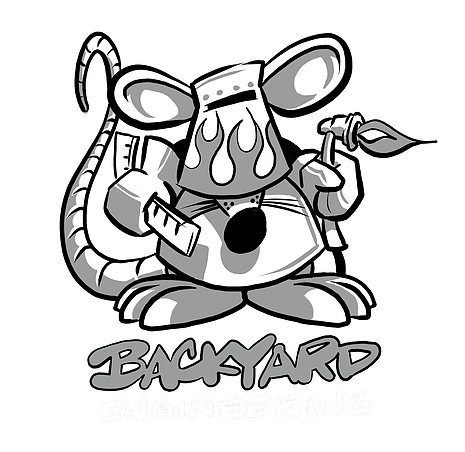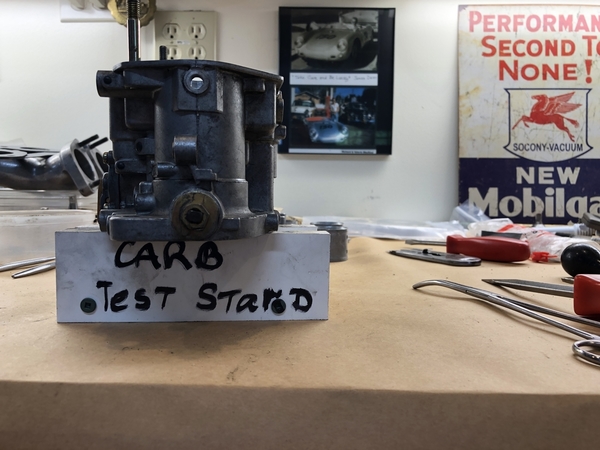Just finished rebuilding my Dellorto 40’s, yet again, to see if I can get over the mild transition stumble that I have had since day one. I started out with the conversion kit to horizontal discharge tubes and I have to tell you, when that engine was pulling on the Main jets it is amazingly strong – the torque between 3,500 and 4,500 rpm (and higher) never lets up, but even up there it still had a slight hesitation when transitioning from any throttle setting (clue 1). I overcame most of that with ever-increasing jet sizes and made it sort-of smoother, but not perfect. Remember these are going on a 2,110 with MOFOCO 044 big valve heads and an aggressive port job, an Engle 120 cam, Berg 1-1/2" extractor and MagnaSpark II ignition.
Since there is nothing better than starting over when you're getting no-where, I went back to the stock, vertical discharge tubes and just returned my beloved Dells to the factory settings.
Here's my collection of jets, the installed sizes in red, and the rest of the stock settings shown for reference:
Venturii size = 34
Idle jet = 60 62 65 70
Main jet = 130 135 140 162.5
Air Correction = 160 180
Accelerator pump jet = 35 45 50 60 70
Pump Squirt per stroke = .3ml/cc (I ran slightly heavy because it's a 2,110 engine)
Fuel Needle Inlet = 1.50
When I bought these Dells, back in the mid-1990’s, they were really different from anything I had worked on in the past, like Stromberg, Holley, Rochester, etc – all American production carburetors and all pretty simple – so I also bought the Tomlinson Dellorto Tech Book and referenced that to do the initial conversion to horizontal discharge tubes AND set things like the float height and drop (both of which were wrong out of the box). I had a passing idea of the importance of float height as the basis for lean/rich idle circuit performance, but somewhere along the line I seem to have forgotten all that because American carbs are pretty simple to set and I hadn't touched an auto carburetor for 25 years when I got the Dells.
Anyway, Tomlinson seems to infer that you check float height by turning the carb top cover over and measuring the distance between the cover gasket and the float and set it to .1969” - .2364”. I chose something in the middle (.2185) which corresponds to a 7/32” drill which I used as my gauge.

For float drop, you flip the cover over to “normal” and measure the float drop to the same gasket surface. Range is .4728” - .5122” so the closest I had in my drill collection was a .5000” so that’s what it is. That's the way I've been setting things up for 20 years and about the only thing that I've never changed. (clue 2)
Just for the hell of it, I googled “setting float height on a Dellorto DRLA 40” and got a few hits over on the Shop Talk Forums and the consensus there was to measure float height without the cover gasket in place (clue 3). That would give us a final float height about 1 - 2mm higher than setting it with the gasket in place and THAT should push the fuel level slightly higher up in the emulsion tubes and THAT should make things slightly richer as it moves past the transition ports.
Ancient experience, from 45 years ago, reminds me that this was the way to overcome transition stumble on Stromberg 97s (remember I said they were pretty simple?) so it should work here, too (I hope). Don't know why this never occurred to me sooner. duh.
So, I have now finished going back to stock (using the Shop Talk float level setting) and have everything back in the car and now…….. I’m afraid to go out there and start it up, just to find that it might be the same as before and I’ve gained nothing.
Maybe I can kill time and get over the anxiety by cleaning the shop. Yeah, that sounds like a good thing to do…… That, and a cuppa tea. Maybe a walk around the neighborhood. Sounds good to me...







